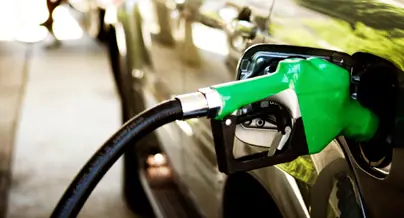
The Top SBA Lenders Fuel Small Business

Indeed, small businesses—or companies with fewer than 500 employees—are the engine of the U.S. economy, accounting for 99.7 percent of all U.S. employee firms, 64 percent of net new private sector jobs and 49 percent of private company employment, according the the Small Business Administration’s Office of Advocacy. However, banking a small business can be an entirely different matter because as borrowers, they tend to fall into a high risk category. Only about half of all new businesses are still around after five years, according to the SBA, and only about a third survive 10 years or more. Most banks tend to be put off by markets where the likelihood of success or failure could be predicted by the flip of the coin.
Enter the SBA’s various loan guarantee programs, particularly its highly popular 7(a) program (named after a section of the Small Business Act passed by Congress in July 1953), which has been very successful in bringing much needed bank financing to the small business sector. In its 2015 fiscal year, which ran through September 30, the SBA approved 63,000 7(a) loans for a record $23.6 billion. In FY2014, the SBA approved 52,044 7(a) loans totaling $19.19 billion. While the 7(a) program’s annual loan totals are still well off their peak in 2007, when they approached 100,000, volume has been increasing since 2009, when demand dropped off sharply as the financial crisis and Great Recession caused many banks to pull back from most lending markets.
There are several SBA loan guarantee programs, including disaster recovery loans, microloans and financing loans for fixed assets like real estate and equipment. But the 7(a) program is the big daddy of them all, and can be used for a variety of purposes, including acquisitions, business expansion, working capital and debt refinancing. A regular 7(a) loan can be for as much as $5 million. Loans up to $150,000 can be guaranteed by the government up to 85 percent. For loans over $150,000, the guarantee limit is 75 percent. These are term loans with one monthly payment of principal and interest, with a maximum maturity of 10 years except for real estate. Real estate can be financed for a maximum term of 25 years.
The leading SBA 7(a) lender in FY2015 based on loan volume was San Francisco-based Wells Fargo & Co., which originated $1.9 billion in loans, followed by Live Oak Banking Co., U.S. Bancorp, JPMorgan Chase & Co. and Huntington Bancshares. Wells Fargo also originated the greatest number of loans in FY2015, at 7,254, followed somewhat surprisingly by Huntington, at 4,337. Wells Fargo—which is the third largest bank in the country with $1.78 trillion in assets—sources much of its 7(a) loan production through a coast-to-coast retail branch network, while $71 billion asset Huntington relies on a much smaller network of 750 branches in six upper Midwestern states, with additional loan production offices in Chicago, Wisconsin and Florida.
| Top SBA Lenders in FY 2015 | |||
| Lender | State | Approved Loans | Approved Amount* |
| Wells Fargo & Co. | CA | 7,254 | $1,918 |
| Live Oak Banking Co. | NC | 966 | $1,148 |
| U.S. Bancorp | MN | 3,977 | $776 |
| JPMorgan Chase & Co. | NY | 4,040 | $754 |
| Huntington Bancshares | OH | 4,337 | $673 |
| Celtic Bank Corp. | UT | 1,586 | $499 |
| Ridgestone Bank | WI | 475 | $474 |
| SunTrust Banks | GA | 575 | $365 |
| Newtek Small Business Finance | NY | 391 | $356 |
| Seacoast Commerce Banc Holdings | CA | 325 | $293 |
| BBVA Compass | AL | 1,432 | $269 |
| Regions Financial Corp. | AL | 329 | $247 |
| BBCN Bank | CA | 315 | $240 |
| BankUnited Inc. | FL | 169 | $207 |
| Stearns Financial Services | MN | 490 | $205 |
*Dollar amounts are in millions
Source: Small Business Administration
The top five 7(a) lenders in FY2015 carried their rankings through the first quarter of the SBA’s 2016 fiscal year as well, which ended December 31. Wells Fargo lead the group with 2,379 loans for total volume of $437 million.
Huntington SBA Group Manager Margaret Ference is a big proponent of the agency’s various loan guaranty initiatives, particularly the 7(a) program. “It allows us to invest in our communities and say yes” to small business borrowers who otherwise might be deemed too risky for a conventional commercial loan, she says. Whether the problem is a collateral shortfall, too much leverage or the need for a longer loan term than Huntington would normally provide, the SBA’s backing makes it possible for many small business borrowers to qualify for bank funding who probably wouldn’t be approved for a conventional business loan. “The SBA guaranty is used to mitigate risk, not to make a risky loan,” Ference says.
The 7(a) program is in fact Huntington’s primary small business loan, and the bank views it as an entry level product. The ultimate goal is to engage the borrower in a broader relationship that would include commercial deposit accounts, merchant services and cash management services. “That’s the start of a relationship,” she says.



